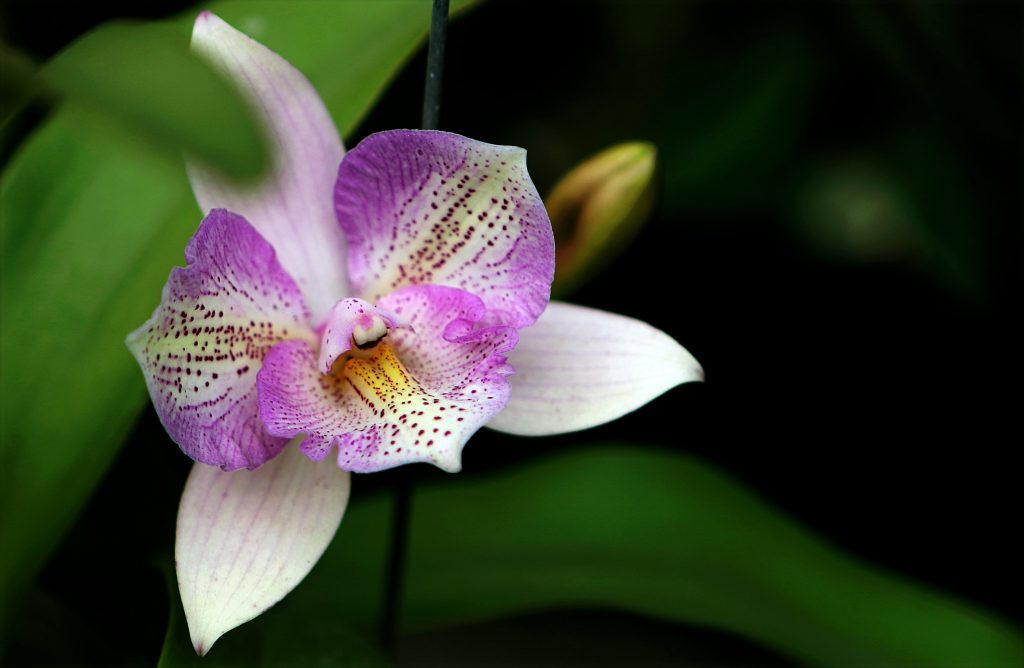
Photo by Hi?u Hoàng from Pexels
1. Wait an Extra Day Before Watering Your Orchid
If you think it’s time to water your orchids, you should probably take an extra day. Overwatering is more common than under-watering when it comes to taking care of this flower. To make sure your orchid isn’t thirsty, put your finger in the soil. If it’s wet, wait until tomorrow.
2. Phalaenopsis are the Easiest to Care for
The Phalaenopsis, the most common genus, is the easiest to grow. Also known as the moth orchids, they are a beginner-friendly type of flower that is capable of sustaining in extreme humidity and low light. Phalaenopsis are the easiest to re-bloom as well, so cultivate their seed and store them if you want more of them next season.
3. Trick Your Orchid for a Re-Bloom
Sometimes your orchids will start to wilt prematurely. While this could mean they require a bit more water, it’s also possible your flowers are too cold to stay upright. To help promote further growth, cut off the flower stalk around the base of the plant. Then, put your orchid in a room where it can stimulate a tropical environment. In the tropics, the daily temperature drops 10 degrees at night, so putting your plant next to a window may do the trick.
4. Place Your Orchid in a Swiss-Cheese Pot
A swiss-cheese pot is a glazed ceramic pot that has swiss-cheese like holes all over them and is capable of draining more liquid than other vases. They’re perfect at replicating the growing conditions an orchid experienced in the wild because the orchid roots will attach themselves around the holes. Swiss-cheese pots also aid with circulation for the plant itself.
As a side note, orchids will not grow in straight soil because they grow on trees. Orchid roots love to grip and wrap around bark during its life-cycle. It’s best to plant orchids in an orchid potting mix filled with bark and wood chips to keep them happy.
5. You Can’t Use Ice Cubes on Orchids
Some plant owners will use ice cubes as a way to avoid overwatering their orchids, but it’s a bad idea to do this. As the ice slowly melts, the plant will absorb the water, but the water’s coldness could shock the orchid and kill it. Adding ice cubes on top of the soil will also make your orchid feel cramped in suboptimal conditions. To keep your orchid alive for years, regularly water them with room-temperature H20 and add a bark mix.
6. Orchids Can Last Multiple Months
The Phalaenopsis orchid will typically bloom for two to four months, but the flowering time depends on the plant’s growing condition. Orchids can re-bloom 1-2 times per year, and some have been known to last for over 100 years. Below are the blooming durations for the most common orchid varieties you can find.
- Cattleya Orchids – 7-21 days
- Paphiopedilum – 6-8 weeks
- Oncidium Orchids – 4-6 weeks
- Dendrobium – 6-12 weeks
- Phalaenopsis – 8-16 weeks
7. Collectors Have Paid Thousand for the Orchids
With over 25,000 different species of orchids, some are rarer than others. During the Victorian Era, there was an Orchid Mania where the rich would spend exuberant amounts of money on a single plant. In the 1800s, some orchid plants would sell for 10,000 Euros, even though the rich had little idea on how to care for them.



